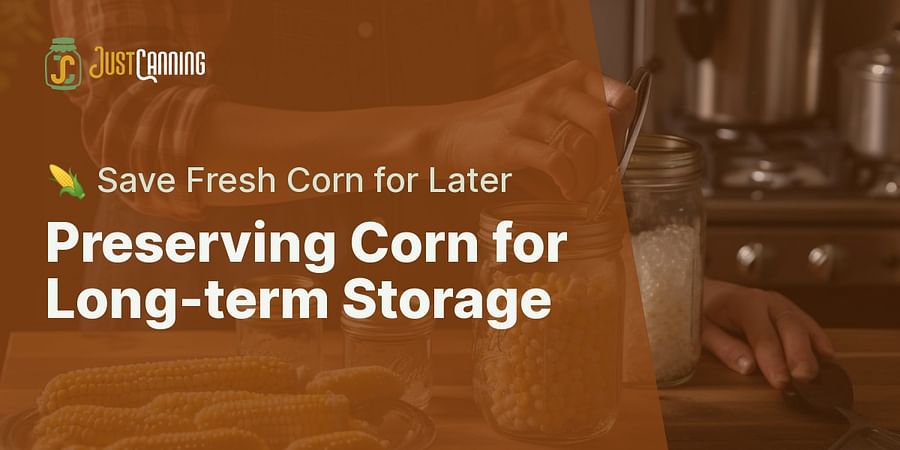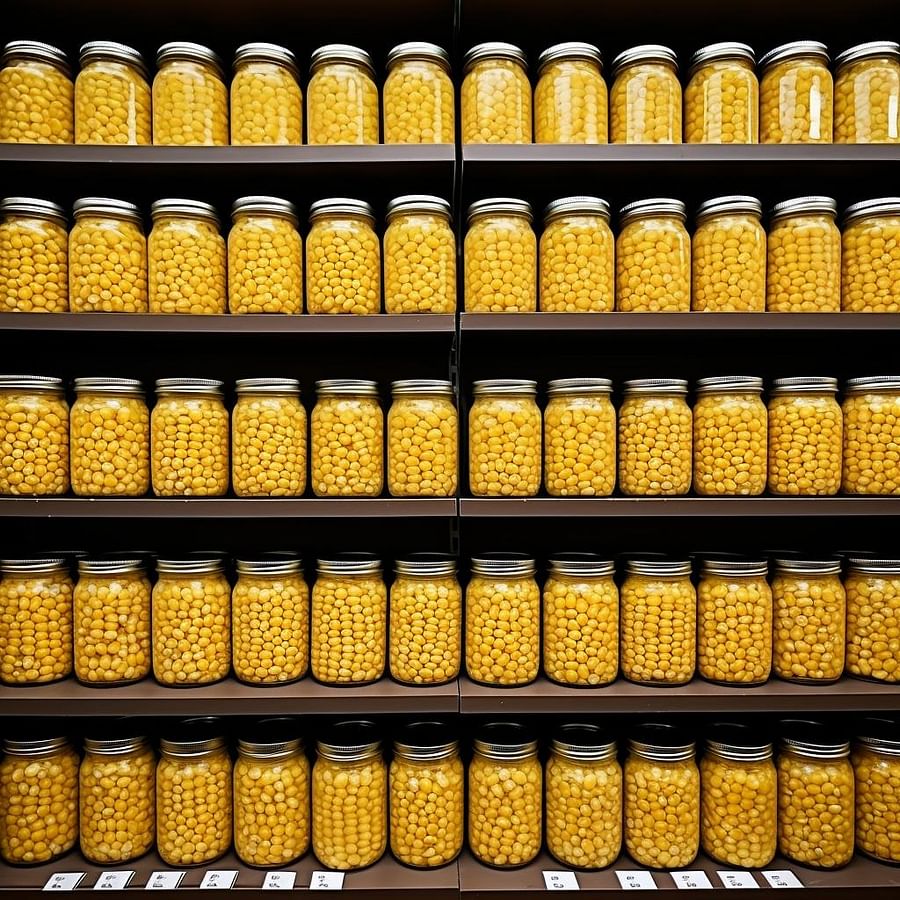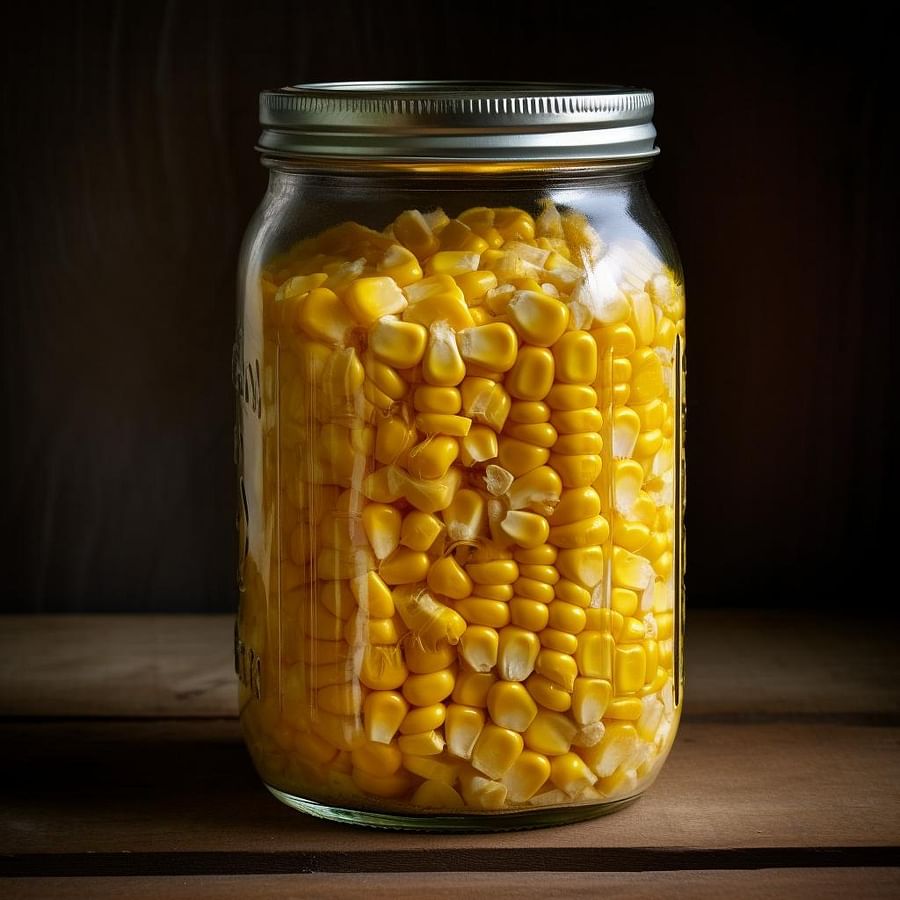How to Safely Can Corn for Long-term Storage

Welcome to the world of home canning corn, a time-honored tradition that allows you to enjoy the sweet, sun-kissed taste of corn all year round. As the first step in your journey, understanding the basics of this process is crucial.
So, what does canning corn entail? Let's delve in.
Canning corn is a method of preserving corn by packing it into airtight containers and heating them to kill the organisms that cause food spoilage. This technique not only extends the shelf life of corn but also locks in its nutritional value and fresh taste.
When it comes to safe canning techniques, it's all about maintaining cleanliness and ensuring the correct processing time and temperature. This eradicates all bacteria, yeasts, and molds that could spoil corn. The result? Corn that's safe to consume, even after long-term storage.
Methods of preserving corn.
As you navigate this canning corn guide, you'll discover various methods of preserving corn, each with unique benefits. The choice from traditional water bath canning to modern pressure canning is yours based on your preference and available resources.
Of course, the journey doesn't end there. You'll also learn about the best containers for long-term storage, how to store grains long-term at home, and tips on keeping your canned corn fresh for longer. Ready to embark on this exciting journey of preserving corn? Let's get started!

Stepping into the realm of safe canning techniques, it's essential to remember that the freshness of your corn hinges on the meticulousness of your process. The goal is to create an environment within your jars that's inhospitable to bacteria, yeasts, and molds, ensuring your corn remains safe and delicious, even after long-term storage.
Firstly, cleanliness cannot be overstated. Make sure your hands, utensils, and work surfaces are impeccably clean. This includes your canning jars and lids, which should be washed in hot, soapy water and then rinsed thoroughly.
Next, consider the processing time and temperature. Corn is a low-acid food, requiring a higher temperature to kill bacteria effectively. This is where pressure canning comes into play. Unlike water bath canning, which is suitable for high-acid foods, pressure canning reaches the necessary temperature of 240°F to preserve low-acid foods like corn safely. Are you equipped with a pressure canner and ready to ensure the longevity of your corn?
Remember, each jar of corn should be processed in the pressure canner for the correct amount of time-based on the size of the jar and your altitude. Over-processing can lead to poor quality, while under-processing can result in unsafe food. It's a delicate balance, but with careful attention to detail, you'll master the art of home canning corn.
As you continue to explore this canning corn guide, you'll delve deeper into the nuances of preserving corn, from choosing the best containers for long-term storage to understanding how to store grains long-term at home. The journey of preserving corn is as rewarding as it is practical. So, are you ready to unlock the secrets of long-term corn storage?

Embarking on your home canning corn journey, you'll find that the process is straightforward yet requires precision. Let's dive into your step-by-step canning corn guide, ensuring you know how to preserve your corn for long-term storage.
With these steps, you've successfully navigated the process of home canning corn. You're well on your way to mastering safe canning techniques, preserving corn methods, and understanding how to store grains long-term at home. Isn't it exciting to see your pantry shelves filling with jars of beautifully preserved corn, ready for long-term storage?

Now that you've mastered the art of home-canning corn let's delve into long-term corn storage. How do you ensure your carefully canned corn remains fresh and flavorful for the long haul? The secret lies in understanding the best ways to store grains long-term at home.
Isn't it satisfying to know that your hard work in the summer can result in a pantry full of golden, sweet corn to enjoy in the depths of winter? And isn't it even more gratifying to know that with the right storage techniques, your canned corn can remain fresh and tasty for years to come? That's the beauty of mastering the art of canning and long-term storage.

Now, let's focus on the different methods of preserving corn. While home canning corn is a popular and effective method, it's not the only one. Other safe canning techniques can help you maintain the freshness and flavor of your corn for the long haul.
So, which method will you try next? Will you stick with the tried-and-true method of home canning corn, or will you venture into the world of freezing, dehydration, or pickling? Remember, the goal is to preserve your corn for long-term storage safely, so choose the method that best suits your needs and preferences. Happy preserving!

Having explored the various methods of preserving corn, it's time to delve into the crucial aspect of long-term corn storage: choosing the best containers. The right container can make all the difference in maintaining the quality and freshness of your preserved corn. Whether home canning corn or using other safe canning techniques, the container you select plays a significant role in the longevity of your corn's shelf life.
For home-canning corn, glass canning jars are the gold standard. They are durable and reusable and offer a clear view of the contents, making it easy to spot any potential issues like mold or discoloration. Quart canning jars are ideal for families, while pint jars may be more suitable for smaller households. Always use jars free from chips or cracks, and pair them with quality canning lids for a tight, secure seal.
When it comes to freezing corn, plastic freezer-safe containers or bags are your best bet. These containers are designed to withstand low temperatures without cracking and are excellent for preventing freezer burn. Remember to label your containers with the date of freezing for easy reference.
For dehydrated corn, airtight containers are essential. These can be glass jars, plastic containers, or even vacuum-sealed bags. The goal is to keep moisture out, as it can lead to mold growth and spoilage. Similarly, pickled corn should be stored in airtight jars, preferably in the refrigerator, to maintain its tangy flavor.
So, how will you store your corn long-term? Will you opt for the classic glass canning jars, or do you prefer the convenience of freezer-safe bags? Perhaps you'll choose vacuum-sealed bags for your dehydrated corn. Whatever your preference, remember that the best containers for long-term storage keep your corn fresh, safe, and ready to enjoy. Happy storing!

Now that we've navigated the maze of preserving corn methods and chosen the best containers for long-term storage, let's focus on some practical tips and tricks to store corn long-term at home. Whether you're a novice or a seasoned canner, these insights will ensure your corn remains fresh, nutritious, and ready to be savored immediately.
Firstly, remember that timing is everything. Corn is best canned at its peak freshness, ideally within a few hours of being harvested. This ensures that the corn retains its sweet flavor and crisp texture. If you can't can your corn immediately, store it in the refrigerator to slow down sugar conversion into starch.
Secondly, practice safe canning techniques. Always follow the processing times and methods recommended in your canning corn guide. This is crucial to kill off bacteria, yeasts, or molds that could cause food spoilage or even foodborne illnesses. Remember, safety comes first!
Next, consider the storage conditions for your canned corn. A cool, dark, dry place is ideal for long-term corn storage. Avoid areas with high temperatures or humidity, as these can degrade the quality of your canned corn over time.
Lastly, rotate your stock. Use the oldest jars first and keep adding new ones at the back. This way, you'll always have a fresh supply of corn. And don't forget to label your jars with the canning date!
Whether you're home canning corn or exploring other preserving corn methods, these tips will help you maximize the shelf life of your corn. So why not give it a try? With a little practice and patience, you'll soon be enjoying the fruits (or, in this case, vegetables) of your labor all year round.
Remember, the key to successful long-term storage is to keep your corn fresh, safe, and ready to enjoy. So, get canning and enjoy the sweet taste of success!
Post a comment